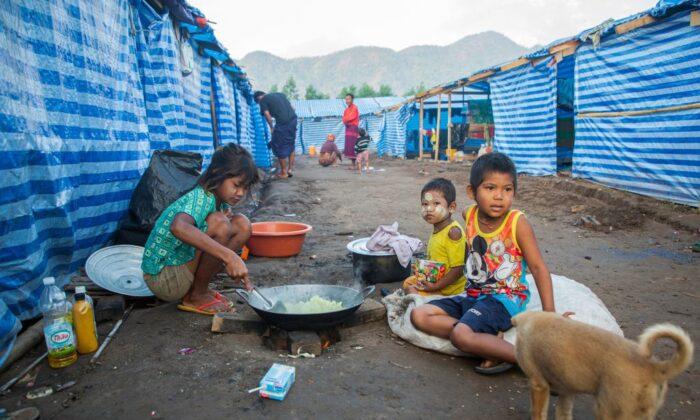The United Nations released a report on June 30 revealing a “massive” humanitarian crisis in Burma, also known as Myanmar, where more than 17.6 million people need humanitarian aid.
According to the report, the junta has established “an all-encompassing system of control” on civilians, and that urgent steps are needed to protect the fundamental rights of the people.
“In the context of armed conflicts, intentional obstruction or denial of humanitarian assistance may further constitute war crimes such as willful killing, torture and other degrading treatment, starvation, and collective punishment,” it stated.
The military regime ousted an elected civilian government led by Aung San Suu Kyi on Feb. 1, 2021, sparking protests and clashes between the army and ethnic minority insurgents in Burma.
‘Climate of Fear’
James Rodehaver, chief of OHCHR’s Burma team, said the junta had created a “climate of fear” to subjugate civilians by using heavy weaponry on civilian areas, launching airstrikes, torching villages, and using landmines to prevent those forced to flee from returning home.
“Russia supplied the Yak-130 aircraft that dropped the bombs and has supplied Mi-35 helicopters that were used to gun down civilians,” the report states.
Attacks Against Aid Workers
Meanwhile, OHCHR spokesperson Ravina Shamdasani said that aid workers are consistently exposed to risks of arrest, harassment, or even death. Ambulances and medical facilities were also attacked.The OHCHR estimated that between 13 to 40 aid providers had been killed in military attacks in Burma.

In November 2021, the military raided a clinic in Kayah State, arresting four doctors, 13 nurses, and one volunteer while also confiscating medical supplies and food rations.
The report also claims that the military would strictly restrict and control the ability of humanitarian workers to distribute aid after allowing them to enter the country.
“Delays and denial of visas have become a tool for the military to decide the time, locations, and functions of those entering the country,” the report reads.
“Once in the country, travel authorizations are required for movements of international staff and distribution of humanitarian assistance. For both visas and travel authorizations, valid organizational registration is required,” it added.





